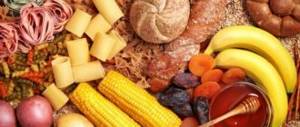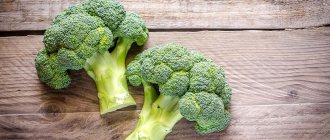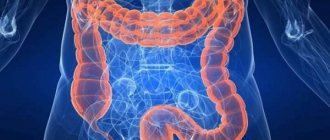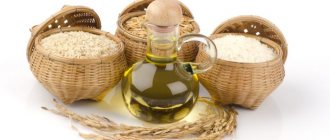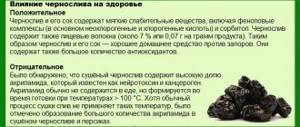Diet for constipation in children
The functioning of the digestive system in babies is still imperfect, so many children suffer from constipation. Often, to solve problems with stool, it is enough to choose the right diet and give more water. If a diet for constipation in children does not work, you should consult your doctor about using mild laxatives.
When constipation frequently bothers your baby, a full examination is required. This is necessary to identify more serious diseases, the symptom of which may be stool retention, and to begin their treatment in a timely manner.
Diet rules
A diet for children with constipation should follow the following recommendations:
- Introduce food slowly and gradually. Unusual foods for a child can cause lack of appetite and depressed health.
- Increase fluid intake by 20%. This category does not necessarily include water, but also fruit drinks and compotes.
- Divide meals into 5 times. This is necessary to ensure uniform formation and movement of feces.
- The diet for constipation in a child should correspond to the age category of the baby.
- Eliminate from your diet foods that can cause increased bloating. To do this, introduce foods that have a lot of fiber.
- If possible, diversify and decorate the dishes offered to the child in order to prevent refusal to eat and loss of appetite.
One of the basic rules for constipation is to control the amount of dairy products consumed. Excessive consumption of milk or kefir can cause serious digestive disorders in a child.
Dish recipes
Parents know: the younger the child, the more difficult it is to feed him food that he does not like. Teenagers may eat foods that are not their favorite but are healthy. Preschoolers and primary schoolchildren will often prefer to remain hungry, or eating will become stressful for both them and their parents. There are few benefits from such nutrition. Therefore, a diet for constipation for children 2-3 years old should contain interesting and beautifully decorated dishes: in the form of plants, animals, fairy-tale characters. Porridge from light cereals can be tinted with berries (of course, provided that there is no allergy to them), or put them in using a funny pattern on the surface. You can cook food together with older children: the child will be interested in trying what he made with his own hands.
Carrot cake
Grate raw carrots on a fine grater, add sugar to taste, flour (about 1 cup), a little vegetable oil, 1 egg and slaked soda. The dough should be quite thick. Bake in the oven for about half an hour at 180°. Decorate with fruit.
Porridge with pumpkin
Steam a piece of pumpkin, smash it with a blender or rub it through a sieve. Add to the finished porridge.
Dried fruit candies
Scald prunes, dried apricots, and raisins with boiling water. Grind in a meat grinder and form into balls. If the child does not have allergies, you can add a little honey.
Diet of preschool children
What you can and cannot eat if you are constipated
The diet of many children often includes not only healthy, but also harmful foods.
Most often, parents pamper their children with chocolate and caramel products, store-bought juices and carbonated drinks.
To switch to proper dietary nutrition, it is worth taking into account the child’s established taste preferences and gradually incorporating unusual foods into the diet.
A great way is to explain to your child how important it is to eat right.
When introducing a diet for constipation, you can combine food intake with gaming and entertainment.
For example, you can hold a quiz with healthy and unhealthy foods, and decorate prepared dishes with interesting shapes.
What foods can you eat:
- Porridge. Wash well before cooking and cook in plenty of water to make it fluffy.
- Soups with vegetables.
- Vegetables and fruits, raw and cooked.
- Butter and sunflower oils in moderation.
- Boiled poultry, fish.
- Unsweetened and low-fat desserts made from fruits and vegetables.
- Cottage cheese kefir.
- Juices. Prepared yourself.
- Steamed omelette.
What foods should children not eat:
- Porridges with a high mucus content, thick jelly.
- A large amount of onions and garlic, seasonings. These products irritate the intestinal mucosa.
- Canned products, both factory-made and home-made. Semi-finished products.
- Pasta, wheat bread, baked goods.
- Sweet biscuits, chocolate products, coffee, cocoa and carbonated drinks.
- Poorly cooked eggs, including fried eggs, are not recommended.
- Mushrooms.
The diet for constipation in children should be supported by all family members. It is impossible for a child to have a different diet from everyone else.
It is recommended to exclude harmful foods from the dinner table during the diet. With support, it is easier for a child to give up usual food and stick to proper nutrition.
Causes of constipation in children
Constipation in children can occur due to physiological or psychological reasons:
- Poor nutrition or a sudden change in diet - replacing breastfeeding with artificial, a large number of new foods, lack of fiber, dry food
- Malnutrition, when there is simply nowhere for feces to come from
- Lack of fluid. In addition to infrequent drinking, dehydration can be caused by overheating during wrapping, high fever, and frequent regurgitation.
- The habit of holding in bowel movements for a long time. The reasons may be psychological (reluctance to relieve oneself while sitting on the potty, shyness) or physical (pain from cracks in the anus or memory of pain and discomfort)
- Stress: moving, parental divorce, death of a loved one or pet, adaptation to kindergarten, etc.
- Hereditary predisposition
- Gastrointestinal diseases, hormonal disorders, parasites
- Lack of physical activity
These are the main reasons why babies may experience difficulty with bowel movements.
Diet for children under 1 year
Such an unpleasant symptom as constipation in children can appear in absolutely any age category. The most common methods for relieving constipation are the use of enemas and rectal suppositories.
Despite the fact that the result comes quite quickly, frequent use of suppositories and enemas will inevitably lead to the depletion of beneficial intestinal microflora.
Therefore, you need to resort to such methods very rarely, in case of emergency.
The safest method is a healthy dietary diet, which is prescribed to each child individually, based on the child’s age, his tolerance to certain foods and possible gastrointestinal pathologies.
Many children suffer from constipation, both before starting complementary feeding and when introducing other foods into the diet.
The danger of frequent constipation in a child
- Pediatricians consider constipation in children a disease that requires immediate treatment. After all, if adequate measures are not taken, the process of defecation will become quite painful and pathological changes will begin within the body. Feces, which will accumulate in the intestines for a long time, will begin to poison the child’s body with toxins. They will make the child lethargic and reduce his defenses. In addition, constipation has a negative impact on the functioning of the stomach.
- The baby may experience belching, heartburn and abdominal pain. The intestinal flora is also very affected. Constipation causes pathogenic bacteria to grow quickly and beneficial bacteria to die. All this, to put it mildly, unhealthy flora will eventually begin to interfere with the normal absorption of nutrients, and this in turn will lead to poor absorption of vitamins and decreased immunity
- Untimely defecation can provoke the formation of anal fissures. Due to the fact that stool is dry and hard, it is quite difficult for it to come out. During bowel movements, the baby has to push hard, as a result of which painful cracks appear
While breastfeeding or bottle-feeding
Every 4 newborn babies suffer from constipation, which is accompanied by increased accumulation of gases, rumbling and abdominal pain.
These problems are possible long before the introduction of artificial complementary foods. Many parents do not know what to do in this situation, how to help their baby.
If a newborn is breastfed and becomes constipated, it is necessary to reconsider the mother’s diet. It is the diet that will help relieve a child from constipation.
It is necessary to exclude all junk food from your diet and include more healthy, easily digestible food. The list of harmful and healthy foods listed above is quite suitable for an adult.
If the baby is bottle-fed or partially bottle-fed, a common cause of constipation is insufficient fluid intake.
It is necessary from time to time to serve the child drinking boiled water, previously brought to a warm state.
If constipation begins to appear regularly, you need to tell your local pediatrician about it.
The specialist will determine the exact cause of the digestive disorder and offer possible treatment options.
During full complementary feeding
Vegetables are recommended as an initial product in complementary feeding. It is especially important to follow the advice if the child had constipation even before the introduction of complementary foods.
The most suitable vegetables in the early stages of growth and development are carrots, zucchini, pumpkin and cauliflower. Serve to baby in puree form.
At the first feeding, give each vegetable puree separately, then you can combine them with each other or combine them with other foods.
For constipation, vegetable and fruit purees for children can help the passage of feces.
If a child suffers from constipation at the stage of a complete transition to “adult food,” you need to reconsider his diet and make changes to the diet according to the baby’s age.
To avoid constipation, it is recommended to follow a few simple rules:
- Do not delay the introduction of solid foods. Many parents for a long time refuse to allow their child to eat food that requires chewing. This leads to digestive abnormalities, including constipation. Most children are able to chew small pieces of soft, peeled fruits and vegetables on their own by around 12 months.
- Introduce dairy and fermented milk products into the diet in a timely manner. Pediatricians recommend that from 6-8 months of age, children should be given baby yoghurts, kefir and curds.
- After the main meal, you can offer your baby pre-soaked prunes or make a puree from them.
- Do not feed your child excessive amounts of meat products. Meat is difficult to digest and can cause constipation and intestinal pain.
- If there is a feeling that the child is not full, then instead of an additional portion of porridge, offer him vegetable puree.
Such a small age of childhood requires minimal medication, so it is recommended to initially adhere to the correct diet so that if constipation occurs, you do not have to resort to treatment with drugs. Meals should be served at the same hours.
How does fiber work for constipation?
There are two forms of this substance:
- coarse (in fragments it is a fiber that is not able to dissolve in water, but absorbs liquid very well and increases in volume; enhances intestinal motility and, accordingly, the movement of feces);
- soluble (on contact with water it turns into a jelly (gel), which has a high viscosity, slows down the rate of bowel movements and the processing of carbohydrates by digestive enzymes).
As you can easily understand, when you have irregular bowel movements, it is coarse fiber that is most effective against constipation. It increases the volume of feces as it absorbs water; swelling, stimulates the activity of intestinal motility (moderate laxative effect). As for the soluble form, it is also useful, although it does not eliminate constipation.
Diet for children from 1 to 2 years old
During the period up to 2 years, significant changes occur in the child’s diet. From the age of one year, the baby begins to try solid food.
Next, baby teeth appear and additional foods are introduced. Gradually, the gastrointestinal tract gets used to a varied diet, and the occurrence of constipation is minimized.
What foods should a child eat if he needs a diet:
- Jelly based on berries and fruits.
- Dried fruits soaked in warm water.
- Pumpkin dishes. It can be either regular puree or various porridges and pancakes.
- Fermented milk products for children.
- Apples in the form of puree, baked pie with cottage cheese.
- Vegetable dishes.
It is worth remembering the need to maintain a drinking regime so that digestion works within normal limits without causing constipation.
Diet for children from 2 to 7 years old
For children under 3 years of age, it is recommended that they partially eat the baby’s diet. Gradually switch to regular healthy adult food.
Most often, from the age of 3, the baby eats the same food with his parents. Naturally, it is forbidden to feed your child excessively fatty, salty or fried foods.
At an older age, taste preferences are formed, so it is recommended to accustom your child to healthy foods from an early age.
A diet for constipation can cause disgust in a baby if such foods have not been consumed before. You must try to instill in your family the principles of proper nutrition.
An approximate menu for a child over 3 years old consists of the following dishes:
- For breakfast: boiled buckwheat, warm tea with a sandwich of bread and natural jam.
- Between breakfast and lunch: a glass of natural yogurt with a small bun.
- For lunch: soup with vegetables in low-fat meat broth, steamed chicken cutlet with milk puree. Cabbage or beet salad, dried fruit compote and a slice of bread.
- Afternoon snack: fruit nectar with medium amount of pulp, 2 cookies.
- For dinner: stew lean white fish with vegetables, prepare a vegetable salad, a glass of unsweetened compote with bread.
- After dinner: a glass of kefir without sugar.
If the child regularly eats properly, then the occurrence of constipation is minimized.
Vegetables and fruits that the baby is accustomed to can help improve digestion and release of feces if there are problems with bowel movements.
Sample menu for the week
The menu largely depends on the age of the child, his tastes and individual characteristics. Approximate option.
Monday
- Breakfast: oatmeal with prunes and dried apricots
- Lunch: vegetable soup, buckwheat porridge with chicken cutlet
- Dinner: low-fat cottage cheese casserole, carrot salad
Tuesday
- Breakfast: steam omelette, baked apple
- Lunch: Lenten borscht, zucchini pancakes
- Dinner: cauliflower with fish cutlets
Wednesday
- Breakfast: barley porridge with fresh vegetable salad
- Lunch: cauliflower soup, chicken breast
- Dinner: vegetable stew, seasonal fruits
Thursday
- Breakfast: vinaigrette, soft-boiled egg
- Lunch: lean cabbage soup, buckwheat porridge
- Dinner: baked potato, tomato salad
Friday
- Breakfast: millet porridge with pumpkin
- Lunch: lean fish soup, zucchini pancakes
- Dinner: beet casserole, a handful of nuts
Saturday
- Breakfast: cheesecakes with carrots, a handful of dried fruits
- Lunch: potato soup with meatballs
- Dinner: stuffed peppers
Sunday
- Breakfast: fruit salad dressed with natural yoghurt
- Lunch: Lenten borscht, seaweed salad
- Dinner: fish baked with vegetables
In addition to water, you can drink:
- Weak black or green tea
- Rosehip or chamomile decoction
- Dried fruits compote
- Vegetable and fruit juices
15-20 minutes before meals, it is useful to drink half a glass of water with a teaspoon of honey. Before bed – kefir or yogurt (preferably homemade).
For greater satiety, main dishes can be supplemented with:
- Dried bread
- Crackers or biscuits
- Whole grain bread
Diet for children over 7 years old
At school age, the cause of constipation in a child is most often a change in diet. School activities do not allow the child to adhere to the same diet and meal times.
It is necessary to maintain the same diet as much as possible, prepare food for the child in containers for school and teach him to have a snack at certain times during breaks.
A list of healthy dishes for children with constipation that you can take with you in a container and not heat up:
- Vegetable pancakes.
- Steamed omelette with added vegetables.
- Cottage cheese, yogurt.
- Fruit salad.
- Cottage cheese casserole.
- Vegetable salad seasoned with sunflower oil.
- Baked apples.
Proper nutrition at school will help your child study, keep him active and successful in mastering educational material.
Useful video
The main cause of constipation is associated with poor nutrition and a sedentary lifestyle. Most often, in the menu for constipation, there is a predominance of food that is easily absorbed.
Eating eggs, milk, fish, meat, and butter does not have a stimulating effect on the intestinal walls.
If, in addition, a person is not accustomed to drinking enough water, few vegetables and fruits, B vitamins, and potassium, then the predisposition to constipation may be one hundred percent.
Let's add here a sedentary lifestyle, a passion for smoking and alcoholic beverages. Diet for constipation helps restore health.
Many diets and menus for the treatment of constipation provide a simple but quite effective way of eating. Unfortunately, more women suffer from this disease.
Diet of older preschoolers and schoolchildren for constipation
After 3 years, the digestive system as a whole becomes more stable and less dependent on errors in nutrition. The main thing at this age is to follow the regime. The diet should contain enough fresh vegetables and fruits for normal bowel function. It is necessary to ensure that the child eats food at approximately the same time, does not indulge in fast food, and does not eat dry food. This is necessary not only to combat constipation, but also to prevent gastrointestinal diseases and the appearance of excess weight.
How to improve bowel function during constipation
If constipation is not caused by:
- thyroid disease;
- dysentery;
- etherocolitis;
- inherited expansion, lengthening of the intestine.
Then some simple advice will help you with problems with the normal functioning of the gastrointestinal tract.
Dieting for weight loss is a problem for many women. Because of this, metabolic processes in the body are disrupted. If a woman also has a sedentary job, constipation will be a constant problem.
If you have constipation, you must take all measures to cure it. Many patients resort to laxatives and enemas.
Their menu includes products that have a laxative effect. Unfortunately, this method cannot cure constipation.
For constipation, this is a temporary measure to help alleviate the problem, but this does not last long. To improve the functioning of the gastrointestinal tract, you need to eat properly and follow a diet.
The diet for constipation in women and men, first of all, should include foods with a lot of fiber and dietary fiber.
Since dietary fiber has the ability to retain moisture, enlarge the food bolus and accelerate its movement through the intestines, stimulating peristalsis of the latter.
Recommended products to prevent constipation:
- Porridge: pearl barley, oatmeal and buckwheat.
- Black type of bread.
- Vegetables: spinach, cabbage, tomatoes, cucumbers, beets, mushrooms, radishes, onions, zucchini, radish.
- Dressing dishes with sunflower, olive, corn oil and sour cream (to soften stool and improve its passage).
- Food products: herring; mineral water, corned beef. (these products are necessary to attract fluid to the intestinal area to soften stool).
- Tangerines, oranges, figs, dates, watermelons, melons, apples, peaches, plums, gooseberries.
- Honey, jam, kumiss, fermented baked milk, kefir, curdled milk, yogurt.
Products intended for heat treatment should not be sugared or boiled. They need to be poured with boiling water and allowed to brew.
Products contraindicated for constipation:
- jelly, chocolate, pomegranate, lingonberries, pears, vodka, red grape wine
- fish and meat soups,
- pasta;
- white bread and buns;
- rice and semolina porridge;
- mashed potatoes;
- coffee, cocoa, strong tea;
- bread and rolls made from high varieties of wheat
A properly designed diet and menu for constipation affects the functioning of the intestines and thanks to it, the microflora is restored. Products for cooking must be fresh.
To properly and naturally cleanse the intestines, you need a diet that includes a diet that includes vitamin B1 in large quantities and pectin. Thanks to this, natural bowel cleansing will occur.
A prerequisite for the treatment of constipation in women is to drink plenty of fluids (not sweet and without gas). Freshly squeezed juices are beneficial. Sugar will be replaced with honey.
Constipation is considered when a person, due to intestinal problems, cannot go to the toilet for more than two days or more.
The most interesting thing is that with this disease the patient can have stool every day, but the process of emptying itself will be difficult. The feces have a dense mass, and when you urge, a person experiences pain and discomfort.
With constipation, a disease occurs in the gastrointestinal tract. This is always associated with poor diet and a sedentary lifestyle.
Constipation is dangerous because the accumulated mass over several days causes intoxication and poisoning in the human body.
Signs of this phenomenon manifest themselves in a rash on the surface of the skin, nausea, headache, dizziness, etc.
Be sure to consult a proctologist about constipation. If this phenomenon is associated only with constipation and there are no other diseases, then the problem can be safely solved with the help of diet.
Proper nutrition for constipation in children
The key to proper digestion is a complete, balanced diet. It is necessary to follow a routine, eat at the same time, avoid overeating and frequent snacking on “harmful” foods - candy, sweet cookies, gingerbread.
If a child has a tendency to constipation, the menu should consist of foods high in fiber. First of all, these are whole grains, fruits and vegetables.
Healthy products for children
For children prone to constipation, it is useful to give:
- Dried fruits: prunes, raisins, dried apricots
- Fresh and boiled vegetables: carrots, beets, pumpkin, zucchini
- Buckwheat, millet and oatmeal porridge (but not instant cereal)
- Fresh fruits and juices from them: plums, apricots, apples
It should be borne in mind that in a child under one year old, even laxative products when administered for the first time can have the opposite effect. Then they need to be removed from the diet for a while - most likely, the body still does not have enough enzymes to digest them. After some time, you can try again. If the desired effect does not occur, perhaps this is an individual characteristic of the body, or the reason does not lie in nutrition.
Proper diet for a child with constipation
The menu must include soups. But rich broths usually have a strengthening effect. Therefore, if you use meat (fish), you need to take low-fat varieties and drain the water after the first boil. You can also boil them separately and add them to the soup a few minutes before they are ready.
In diets for constipation, milk is excluded from recipes. Porridge is cooked in water; you can add a little butter to it. Dried fruits, carrots, and honey are used as sweeteners. Sometimes replacing cow's milk with goat's milk helps.
In addition to nutrition, physical activity plays an important role in the prevention of constipation in children. A light abdominal massage before meals also helps - it stimulates the gastrointestinal tract.
Foods that should be excluded from the diet
If a child has problems with bowel movements, it is better to remove from the menu:
- Sweet pastries and fresh wheat bread
- Sweets: candies, chocolate, cakes
- Animal fats and high-fat dairy products
- Fast food: chips, salted nuts, snacks
- Rice and semolina porridge
- Pickles and smoked meats
- Blueberries, persimmons, quinces, grapes
- Dumplings, dumplings, pasta
It is not advisable to add a lot of sugar to drinks or drink strong black tea and coffee.
A diet for constipation should not cause rejection in a child. Therefore, if you really want some product from the prohibited list, you can give it. A slice of chocolate or a couple of grapes, as a rule, does no harm, provided that the “right” foods predominate on the menu.
Drinking regime
Constipation is often caused by a lack of fluid. But even if the problem is not related to this, it is necessary to ensure sufficient drinking - this prevents the stool from thickening and makes bowel movements easier.
In most cases, a breastfed baby needs breast milk. But if you have regular constipation, you can give a teaspoon of water shortly before feeding. When complementary foods or formula are introduced into the diet, there is a need for additional fluid. At first it is pure water, later the child can be given rosehip decoctions, compotes, and diluted freshly squeezed juices. Carbonated drinks should be avoided - they provoke fermentation in the stomach.
Fermented milk products must be fresh - no more than 1-2 days. When stored for a longer period of time, they often have the opposite effect.
Diet and purpose
Take care of your health - save the VKontakte link
A diet for constipation helps restore proper motility and help cleanse the intestines in a timely manner. To do this, you need to choose a regimen and proper nutrition.
The daily menu should have enough fats, proteins, carbohydrates, macroelements, and vitamins. It is important not to overeat; in terms of energy value, the daily diet should be about 3000 kcal.
A split-meal diet for constipation helps restore bowel function. To do this, you need to eat food every two or three hours. Each meal should be no more than 250 grams.
Select dishes that correspond to these data. Thanks to this diet, a regime for the functioning of the gastrointestinal tract is developed. Small volumes of food allow you to quickly digest and eliminate them.
The diet requires mandatory consumption of fruits and vegetables, dairy products. Minimum consumption of alcoholic beverages.
For constipation, it is important to select products that have a laxative effect. These are vegetables, dried fruits, fermented milk products, unrefined vegetable oil.
If you have constipation, it is important to drink enough fluid, up to one and a half or two liters per day. A fractional diet is recommended. Meals every two hours, in small portions. Last meal at 7 pm.
The diet includes eating low-fat fish and meat (boiled or stewed only). Be sure to consume soup with meat or fish broth once.
It is better to use vegetable broths. It is advisable that the menu include cold fruit soups and beetroot soups.
Lactic acid products have a beneficial effect in the digestion process in the gastrointestinal tract. The exception is fatty cheeses and recipes prepared from them.
It is important to eat black bread for constipation, as well as grain baked goods containing bran. Of course, olive, vegetable, flaxseed, and pumpkin oil are useful for constipation.
A diet for constipation for adults should consist of vegetables: zucchini, carrots, beets, peppers, cucumbers, celery, tomatoes, eggplant, sauerkraut, green beans, peas.
Fruit compotes, fruit drinks and other drinks will be a useful addition to the diet. Berries and fruits will help in the treatment of this disease. The consumption of cherries, blueberries, lemon, dogwood, and cranberries is prohibited.
Excellent helpers for constipation are freshly squeezed apricot juice, as well as tomato, plum, and carrot juice. The best drinks for illness are rosehip infusion and green tea. The diet allows the consumption of honey, marmalade, marshmallows, jam and preserves.
Summer is the fastest time of the year, autumn is coming, forcing women to dress warmly, drink warm drinks and pamper themselves with various delicacies.
These are sweets, cookies, cakes, which, according to doctors, are unhealthy foods that contribute to constipation. It is better to eat more foods rich in fiber and dietary fiber. There should also be a sufficient amount of fat in the diet.
Breakfast should include freshly squeezed vegetable juice, prune broth, or water with a spoon of honey. In case of prolonged constipation, a diet for one day consisting of cabbage and apples will help in solving a delicate issue.
To do this, only fresh apples and cabbage should be present in food throughout the day. You can use them together by first grating them on a fine grater.
To strengthen the walls of the large intestine, it is useful to drink freshly prepared juice from spinach, beets and carrots. For dinner, prepare steamed or boiled fish, boiled vegetables or vegetable salad.
In order for the body not to get used to laxatives, every effort must be made to cure constipation. Diet will help with this.
To do this, try to reconsider your diet and diet. Sign up for a fitness class and do some exercise on your own.
Nutritionists answer important questions
What role does dietary fiber play for pregnant and breastfeeding women?
Fiber will help expectant mothers cope with a delicate but very common problem - constipation. It is extremely undesirable to take medications during pregnancy, so as not to harm the fetus, so fiber can be safely called a panacea in the fight against intestinal problems. In addition, it is an excellent assistant in the fight against extra pounds - both before and after childbirth.
Eating fiber prevents the development of various metabolic diseases. It is no secret that during lactation the female body undergoes hormonal changes, which causes the level of glucose in the blood to increase. It is fiber that stabilizes blood sugar levels, reducing the risk of diabetes.
Fiber in the diet of diabetics
Since fiber balances blood sugar levels, it is a must-have for diabetics.
The most beneficial type of fiber for diabetes is natural cellulose. To enhance the antidiabetic effect, it is better to consume fiber along with complex carbohydrates (especially starch).
The diet of people with diabetes should include vegetables containing a minimum of carbohydrates and a maximum of fiber, as well as bran bread and various cereals. Cucumbers, zucchini, tomatoes, eggplants, cabbage - all these vegetables are rich in fiber and form the basis of proper nutrition for diabetes.
Allergy to foods rich in fiber
With the exception of individual intolerance to specific foods, fiber itself is practically safe for allergy sufferers. Moreover, for many types of food allergies, it is recommended to include it in the diet - dietary fiber restores the normal functioning of the gastrointestinal tract and reduces the permeability of the digestive tract mucosa, thereby reducing the number of allergens that penetrate the blood.
The main rule when consuming fiber is not to overeat and eat small portions throughout the day.
Diet for spastic constipation
With this type of constipation, various functional disorders in the intestinal area are observed.
They usually develop in conditions of disease of the upper digestive tract. Intestinal neurosis of a psychogenic type is observed.
For constipation, you should take sedative medications.
Spastic constipation excludes the consumption of rough food. Since it has a traumatic effect on the intestinal walls. In this situation, there should be a gentle diet.
To reduce intestinal cramps, the menu includes the following products: butter, fats, cream. It is necessary to limit fiber in the patient's menu and increase protein and vitamins.
When preparing food, it is necessary to puree vegetables and eat meat and fish only in chopped form.
You can only: white breads, light fruit soups, slimy soups, vegetable purees, kefir, acidophilus milk, vegetable oil, olive oil, butter.
Over time, it is necessary to introduce fiber into the diet. At first it should be gentle, then gradually rougher.
For this type of constipation, it is recommended to drink one or one and a half glasses of mineral water (without gas). Be sure to take it two or three times a day, an hour before meals.
In order to normalize the motor function of the colon, it is recommended to use medicinal herbs.
- Flowers of linden, chamomile, calendula, peppermint, fennel, carrot tops, yarrow.
Physical therapy, relaxing massage, and warm baths must be introduced. If the patient does not experience an exacerbation, constipation prophylaxis is prescribed.
Exercises for constipation
Therapeutic exercises combined with diet help the child’s body cope with constipation faster. Minor physical activity improves blood supply to the pelvic organs, relieves spasms and improves the release of accumulated gases, and also strengthens the abdominal muscles. The set of exercises is simple and can be performed at home:
- Pulling your knees towards your stomach. Performed while lying on your back.
- Lifting your legs up. Lying on your back, without bending your knees, raise them perpendicular to the floor.
- "Scissors". Lying on your back, spread and close your straight legs, gradually raising them above the floor. Don't bend your knees.
- "Bike". Also, lying on your back, imitate riding a bicycle with your legs.
- Squats.
- Walking in place.
- Tilts the body to the sides. Starting position – feet shoulder-width apart.
- Bend forward, trying to touch your toes.
Massage for difficult bowel movements is reduced to light stroking clockwise in the abdominal area. The movement must begin from the navel and gradually increase the radius of the spiral turn.
It is very easy to harm a child’s body, so when treating constipation, you should not get carried away with medications. It is much easier and more useful to review and make adjustments to the diet of the child and the whole family in order to eliminate the occurrence of this delicate disease and possible unpleasant consequences.
Source
You should be very careful when planning a diet for a child with chronic constipation. In each case, the causes of constipation may vary significantly. Often, an unbalanced and irrational diet leads to the appearance of irregular bowel movements in a child.
Diet for atonic constipation
One of the most common is the atonic type of constipation. It is characterized by deterioration in the peristalsis of the colon. Absence of bowel movements for two or more days.
There is a problem with bowel movements, pain, bloating, and decreased appetite. The temperature rises due to intoxication in the body. There may be a change in shades of the skin.
The accumulated mass of feces compresses nearby organs, causing pain symptoms. The patient also feels discomfort in the lower passage.
In order for defecation to occur, it is necessary to push hard, because of this, bloody streaks appear.
The consumption of white bread, wine made from red grapes, rice, and green tea is prohibited.
Also pasta dishes, blueberries. Atonic constipation can be cured if you follow the correct diet and diet.
Causes of atonic constipation:
- A sedentary lifestyle does not contribute to the development of muscles that are developed through regular walking.
- Fast food in fast foods with low-quality food (which does not give the natural effect of irritants).
- Snacks that replace a full meal.
- Nervous exhaustion and stress.
- With this type of constipation, there may be hidden processes of inflammation in the body.
Treatment of atonic constipation is a diet containing foods rich in fiber. When cooking, you should try to maintain the consistency of the puree.
It is better to cook dishes in the oven or boil them, such as vegetables. They can be eaten boiled or raw. The diet will definitely help restore the functioning of the gastrointestinal tract
Be sure to remember to drink more water. It is the main medicine for constipation. Since thanks to it the feces soften, toxic substances are removed from the body. You need to drink up to two liters of water per day.
Before starting treatment or choosing a diet for constipation, you should consult a doctor.
After the examination, recommendations and advice on treatment and diet will be given.
Reviews and results
Reviews from parents who fed their children according to these recommendations are generally positive. The stool improves quickly enough, provided that there are no other medical problems and meals are regular.
Difficulties according to reviews are mainly the following:
- Children often refuse to drink plain water. Some people add honey to it, others offer water not in a mug, but in a bottle;
- It is difficult to persuade a child to eat certain types of foods. Because of this, the diet for constipation in a 2-3 year old child becomes very meager.
- Sometimes children attending kindergarten hardly eat there, which is why their diet is severely disrupted
- Recommended products do not have the desired effect
This applies mainly to the first years of a child’s life. In this case, you need to select a diet together with your doctor, and also find ways to persuade the child to eat or drink on time.
Reviews from doctors and specialists
Experts note: if difficulties with bowel movements occur regularly, it is necessary to undergo an examination to identify the causes. These could be gastrointestinal diseases, hormonal imbalances, allergies, parasites and other reasons not directly related to diet.
The younger the child, the longer it may take to select a diet. Everyone's body is different; what works for some people may not have the desired effect for others. Likewise, not all foods on the prohibited list will necessarily cause constipation.
The psychological comfort of the child during bowel movements is of great importance. If fear of the process or aversion to it is added to the physical pain due to problems with bowel movements, it will be much more difficult to cope with constipation.
It is acceptable to use mild laxatives and age-appropriate suppositories. But only once, to soften the stool and help get rid of it. Long-term use is undesirable because it disrupts the natural functioning of the intestines, and after withdrawal the problem may worsen.
